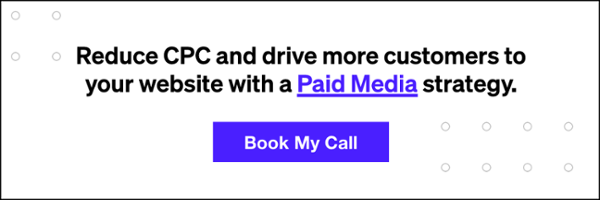Introduction to YouTube Advertising: Part 1

Welcome to Part 1 of our YouTube Advertising blog series! This series is intended to give an introduction to the technical side of YouTube advertising, share best practice methods, and arm you with all the tools needed to start and manage a YouTube advertising campaign.
YouTube advertising – the branding powerhouse of the AdWords ecosystem. YouTube’s advertising engine is an excellent tool to spread brand awareness in a few unique ways. While most people are all too familiar with the pre-roll commercials before their favorite video, most don’t realize that YouTube’s ad network goes deeper. Pre-roll ads are just one facet of YouTube advertising. When discussing YouTube advertising, we have to realize that we’re talking about serving a YouTube video within the YouTube Network and/or the Google Display Network (GDN). There are 4 different types of ads that can be served through these networks:
- In-Search – Very similar to the Google Search Network (GSN), but in YT search. The top two results are sponsored placements, with a cost-per-click (CPC) model.
- In-Display – Sponsored video thumbnails on the right rail of the current video. CPC model, similar to In-Search.
- In-Stream – Pre-roll videos aka commercials. Typically able to be skipped after 5 or so seconds into the ad. We recommend keeping these ads in the 15-30 second range.
- GDN – Banner and box ads within the YouTube Network.
So – who exactly is being served these ads? YouTube’s audience and viewing statistics are pretty damn staggering. Nearly 150 million individuals watch over 650 million hours of YouTube videos monthly. Over 20 billion videos make up that 650 million hours. YouTube is one of the world’s biggest search engines, second only to Google. That means most, if not all demographics are represented in YouTube’s audience. It has become a cornerstone of modern culture, and a great tool for advertisers to reach their audience in interesting ways.
As with most of AdWords, which ad type to use is entirely dependent on your client’s goals and resources. For instance, a client with little-to-no high quality video content would opt to use YouTube’s GDN ads only. Conversely, a client that has produced several videos and actively manages their YouTube page would have more success with In-Stream, In-Search, and In-Display.
I want to emphasize “high quality” here. As the saying goes, content is king. But not just any content can pass the test – you have to create content that people actually want to consume. Seems like common sense, but all to often we see advertisers missing the mark and creating a negative impression on their audience. Combining interesting, well-produced content with intelligent targeting criteria will always yield the best results. Additionally, be sure to keep your ads in the 15-30 second range. Always deliver your message quickly and clearly.
Beyond that, it’s important to understand that YouTube advertising might not be the best fit for certain clients. Ask any Paid Media Manager – YouTube isn’t the best ad network for direct response and conversion focused campaigns. I’m not saying that creating ads that entice the audience to engage is impossible, but be sure to do your due diligence before spending your client’s money. But, as I mentioned earlier, YouTube ads are an amazing tool to spread brand awareness. Many businesses are moving away from traditional advertising strategies (commercials, billboards, etc) and YouTube’s imminent growth is undeniable.
The cost-per-view (CPV) payment model allows YouTube advertisers to rack up a ton of impressions for cheap. Average CPV ranges anywhere from $0.05 to $0.20, and a “view” is only counted if 30 seconds of an ad (or the whole ad, whichever is first) is viewed by the viewer. This is a huge bonus for advertisers, because skipped ads can provide impressions for no cost! Viewers who click the ad can be directed one of two places – the YouTube channel of the advertiser, or a specific video in the advertiser’s account. Again, choosing which depends on client goals and strategy.
YouTube advertising is a great tool to supplement the success of other marketing and advertising efforts. It’s easy to see how pumping brand awareness can increase the return on other traditional/digital media buys. It’s not the right fit for every advertiser, but can flourish if used well.
That concludes Part 1 of our YouTube Advertising introduction, thanks for reading! Keep an eye out for Part 2 (and possibly 3…) coming out in the next couple of weeks. If you have questions in the interim, don’t hesitate to get in touch with us at contact@powerdigitalmarketinginc.com.
Our Editorial Standards
Reviewed for Accuracy
Every piece is fact-checked for precision.
Up-to-Date Research
We reflect the latest trends and insights.
Credible References
Backed by trusted industry sources.
Actionable & Insight-Driven
Strategic takeaways for real results.






